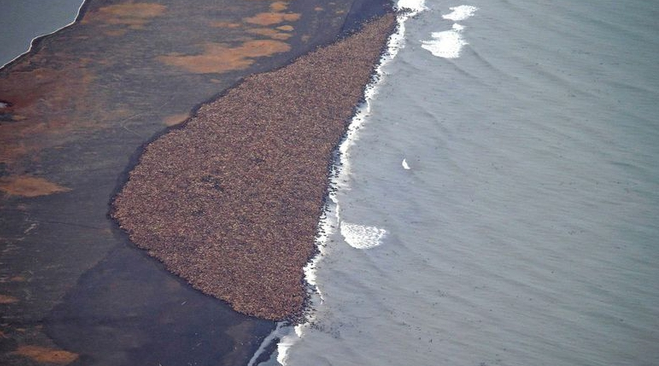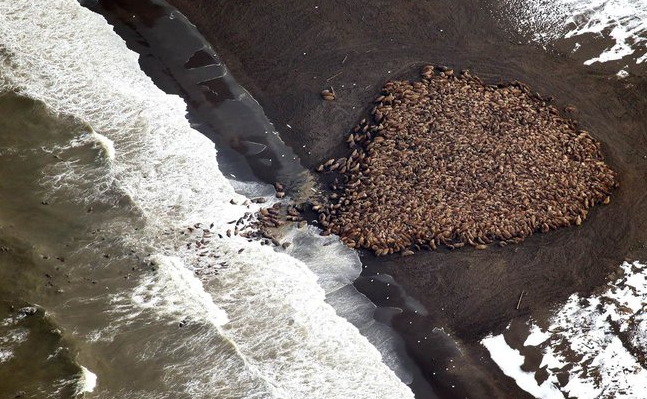PHOTOS: Thirty-five thousand walruses forced to rest on land because they can't find enough ice
Digital Reporter
Wednesday, October 1, 2014, 6:01 PM - Tens of thousands of walruses have been forced to gather on shore because there isn't enough sea ice to sustain them, according to the National Oceanic and Atmospheric Administration (NOAA) and the U.S. Geological Survey (USGS).
"Once again, an extreme retreat of Alaska’s summer sea ice has led large numbers of Pacific walruses to haul out on land to rest instead of resting on offshore ice," the USGS writes.
"The walruses are hauling out on land in a spectacle that has become all too common in six of the last eight years as a consequence of climate-induced warming. Summer sea ice is retreating far north of the shallow continental shelf waters of the Chukchi Sea in U.S. and Russian waters, a condition that did not occur a decade ago. To keep up with their normal resting periods between feeding bouts to the seafloor, walruses have simply hauled out onto shore."
![]() RELATED: New regulations provide more protection to endangered shark and manta ray species
RELATED: New regulations provide more protection to endangered shark and manta ray species
An estimated 35,000 walruses were spotted by plane on a beach in northwest Alaska by NOAA on September 27.

"The population-level effects of these hauling out behavioural changes are not yet understood; however, USGS and other researchers do know that while onshore, young walruses are susceptible to mortality from trampling," The USGS says.
"Additionally, hauling out on shore and using nearshore feeding areas may be energetically less profitable than their preferred behavior of using the ice as a haulout platform on which to rest while remaining near rich feeding grounds."

If current trends are any indication, this could become the "new normal" for walruses and other ice-dwelling creatures.
West Antarctica, for example, is currently losing over 100 billion tonnes of ice each year. Recent studies suggest the area's glaciers have reached the point of no return and their collapse is now inevitable.
Images courtesy of Corey Accardo/NOAA



